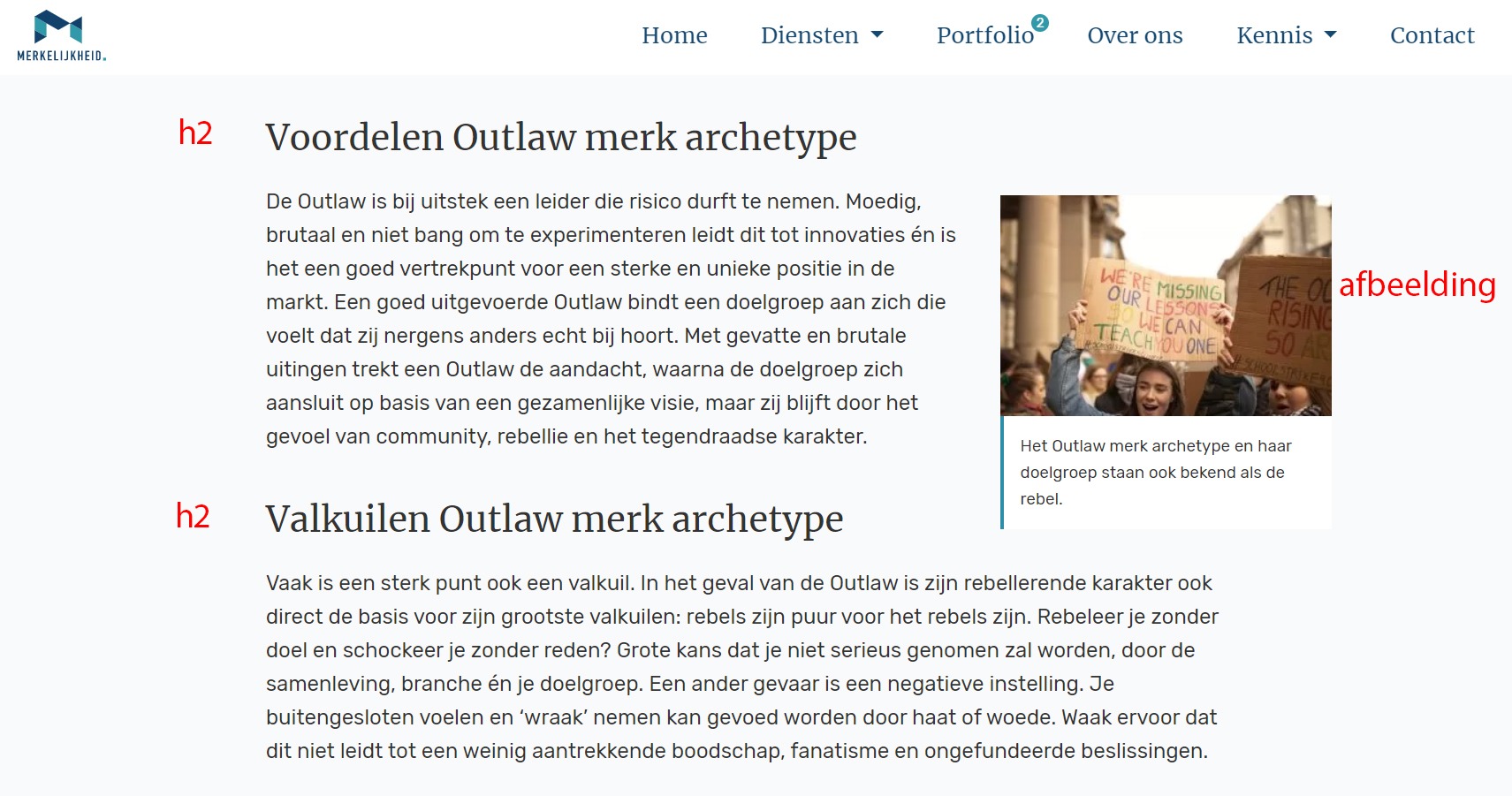SEO strategy in 3 easy steps

You can make SEO as complex as you want, with terms like Structural Data, Search Intent, Link Profiles, and more. These concepts become essential only when 80% of the success is already achieved. For many businesses, a 3-step SEO strategy is more than enough to make a difference:
1. Keyword Research
2. Technical SEO
3. Content Marketing
By following these three steps, you gain an advantage over 95% of the market and invest in your future online marketing success. Without the need for significant investments or complicated technical projects. We’d be happy to explain these three steps in detail if you’d like.
At the top of Google with Search Engine Optimization
With Search Engine Optimization, we mean optimizing your website so that it can be indexed effectively by search engines.
When we say search engines, we’re mostly referring to Google. According to Statcounter, Google dominates the search traffic market with approximately 95%. Microsoft’s Bing and DuckDuckGo follow with 2.5% and 0.75%, respectively. So, in almost all cases, Google is the main player worth considering.
So, what does SEO mean? It means optimizing our website so that Google can easily find it, index it, and give it a high position in its search results.
Technical SEO Optimization: Crawling and Indexing by Google
First, let’s understand what “finding” and “indexing” mean.
“Finding” means that Google knows your website exists and knows which pages it contains. Only then can search engines send their automated crawlers to map out your site. The easiest way to achieve this is by uploading a sitemap to Google’s Search Console. This tells Google exactly which pages your website has and how they relate to each other. It’s a helpful guide for the little robot tasked with mapping the internet.
Next, Google needs to index the information on your pages, giving it a place in its own database. This database is what Google uses to perform search queries. By making it as easy as possible for Google to index your pages, you’re taking the first crucial step towards optimization. This is often referred to as technical SEO.
SEO Strategy Starts with Keyword Research
Technical SEO is crucial, but before you invite Google over, you need to figure out which keywords are important for you. This is called keyword research.
Keyword research is the foundation of any SEO strategy. It helps you discover the key terms your target audience enters into Google and where you want to be found. You analyze the competition and use Google Ads Planner to list as many keywords as possible. Then, you determine which keywords you’ll focus on.
Analyzing Keywords: Real-Life Example
It sounds simpler than it is. Take our client Apex Dynamics, for instance. They offer a product referred to as both “gearbox,” “gear case,” and “reducer.” Which one should you choose? Several factors come into play, but in essence, we look at:
– Competition: How likely am I to rank for this?
– Volume: How many people search with this keyword?
– Intent: What is my target audience searching for?
The last factor, intent, adds complexity. When someone enters “buy gearbox” or “sell gearbox,” it’s easy to assess the value of those keywords. But what is someone looking for when they enter “quality gearbox,” and how does that relate to my site? What’s in it for me?
Fortunately, we have various tools to answer these questions, not least of which is Google itself. By entering a keyword, you can see the current top players. Examine these competitors and determine the actual question or questions they are answering. These sites rank high because they, according to Google, provide the best answer to the searcher’s actual question. Is your product or service the answer to that question? Then, you’ve found a winner.
Results of Keyword Research
In the case of a new campaign, the keyword research typically yields between 5 and 25 keywords with associated search volumes and intent. These are the keywords that will be central in the coming weeks or months during implementation.
Keyword Research and Combining Technical SEO
Up to this point, you’ve been working on the foundation: you’ve identified the key keywords and ensured that Google can find your site. Now, you need to make sure that Google associates your site with those key keywords. We achieve this by combining keyword research and technical SEO.
Technical SEO can be as complex as you want it to be, but the basics are quite straightforward: make sure Google can quickly and easily determine what your page is about. This means:
– Provide a clear title (with your keyword in it).
– Write readable text and provide Google with a concise summary.
– Use clear subheadings to indicate the content of paragraphs.
– Use the right technical tags: title, h1, h2.
Advanced: Would you like to take the next step right away? Make sure that your internal (link) structure clearly reflects how your site thinks about the hierarchy between different keywords.
Go through all pages and articles on your site, and ensure that you address the above on each page. There’s a good chance that you’ll start seeing the initial results of your efforts through this.
Content marketing is crucial in Search Engine Optimization
Your foundation is now in place. You know which keywords are important, and you’ve set up the technical aspects so that Google understands your website is about those keywords. But you haven’t found yourself on the first page yet, let alone in the top 3. What’s missing?
What is content marketing?
Content marketing is the creation and distribution of valuable and relevant content with the ultimate goal of attracting or retaining a specific target audience.
And since we’re discussing SEO in this article, it’s already clear how we want to distribute the content: through Google.
So, you’ll create content where your keywords take center stage.
It can be anything: videos, articles, podcasts, illustrations, infographics, photos, or anything else. The key is to structure it in a way that Google effortlessly understands which keywords are at the forefront.
By regularly publishing content around your most important keywords, Google will associate your website with those topics. This is how you build authority and demonstrate to Google that it’s likely people will find the answers they’re looking for on your website.
What makes good content marketing
We could easily write ten articles on good content marketing. But the basics of good content for SEO are:
1. Create a catchy title (with your keyword in it).
2. Write at least 500 words.
3. Include at least one internal and one external link.
4. Include an image.
5. Avoid huge blocks of text; use headings and formatting to break it up.
That’s it! If you regularly publish content that meets these relatively simple requirements, you’ll have an advantage over 95% of the market.
Long-Term SEO Strategy
Search engine optimization is a long-term strategy, and the winner is often the one with the most endurance. Almost any company can publish two articles on a keyword in a month, but winners publish 60 articles over five years.
And that makes sense too. Companies that start with SEO often only see the first results of their efforts several months later. It’s only after a year or even longer that they realize, “This is a great investment!” For many companies, it’s much easier to set up a booth at a trade show.
But in doing so, companies leave important assets unused. Does your website (domain) exist for more than 10 years, or do you have hundreds (or even thousands) of pages with product information and articles lying dormant? Then the chances of you being able to start an SEO strategy cost-effectively are enormous. By following the steps in this article, you can lay the foundation for future success.



